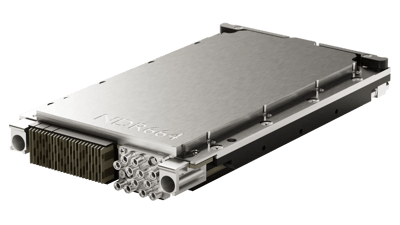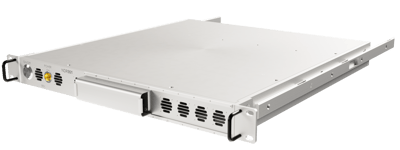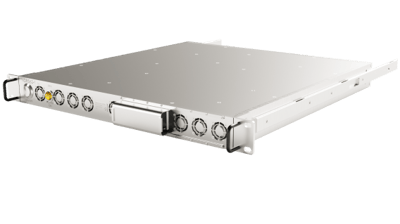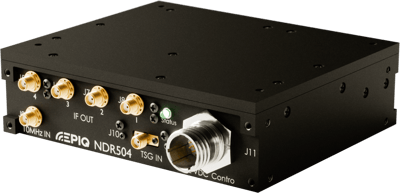Managing Our Supply Chain in Challenging Times
John Orlando
06/22/22

Supply chain challenges over the course of the pandemic have had a dramatic effect on any business making a physical product, and especially any kind of modern electronics product. Parts shortages are causing significant delays in the availability of many things we all used to take for granted like a new bike, patio furniture, and lawn mowers. Electronics have been hit particularly hard, making purchases of the latest PlayStation®, car, or dishwasher a practice in patience and waiting for multiples of months. The lack of “new” is placing a premium on “available” as in “used,” hence the price surges in used cars and electronics. Ever since COVID created record demand for electronics in early 2020, the electronics manufacturing industry has been turned upside down.
If you’re reading this blog, you know that Epiq Solutions develops and sells a range of software-defined radio products and RF sensing solutions. In other words, we make actual physical products that are highly reliant on various modern electronics (passive components, integrated circuits, and everything in between). In 2021, the majority of our revenue came from selling these physical products, which includes both hardware and software that runs on that hardware. Thus we are right in the middle of the same industry challenges that are affecting pretty much every other electronics manufacturer these days.
But if you’ve poked us for a quote lately for one of our products, you’d notice that our lead times have been holding steady for the vast majority of the products in our catalog. Prior to the pandemic, our typical lead time was six weeks for most products (this excludes our 3U VPX products, which are all build-to-order, and thus longer lead times, even before the pandemic). As of the writing of this post (June 2022), our standard lead time is still in that same 6 - 8 week range. Now, many of you might be thinking, “Hold on a second. With everything you’ve just mentioned, how is that possible?” And frankly, it wouldn’t have been possible without our stellar production team. Their vigilance in monitoring lead times of components, being aware of the increases in early 2021, and timely communication of their insights to Epiq’s leadership team allowed us as a company to make well-informed, critical decisions. We should mention that these lead times are holding true for typical order sizes, which we anticipated based on forecasting. Large, unanticipated orders may see delays. We quickly pivoted to a posture where we decided to invest significantly in our electronic component inventory, almost doubling it in terms of dollars invested in only a few months. We also need to thank our customer-facing team who were asked to dial-in their forecast of opportunities, ensuring that each opportunity had a reasonable likelihood of closing, as well as our customers who understood the situation and provided the forecasts. When we were reasonably sure of our projections, we swallowed hard and began buying.

By April of 2021, parts were being ordered at an accelerated pace. By June of 2021, we had placed orders for the vast majority of the components we’d need to fulfill our 2022 forecast, and by Dec 2021, we had placed orders for a significant portion of our forecast for 2023. We were already seeing 6 - 12 month lead times for components bubbling up all around us, and it seemed to be a constant game of whack-a-mole for parts availability for upcoming production runs at our contract manufacturers.
Here are a few notable anecdotal situations that we have run into over the course of the last 12+ months of supply chain craziness:
-
The price point for electrical components has been adjusting to match demand. In many cases, we have seen component vendors institute an across-the-board 20% increase in component prices, regardless of which components in their catalog are actually costing more to manufacture. It isn’t clear if these price increases will be temporary or not, and we have continued to try to shield our customers from these adjustments as much as possible.
-
FPGAs and memory parts are probably two of the most difficult items to procure these days. At least with memory, there are often pin-compatible alternatives that can be explored from other vendors. However, with FPGAs, you’re basically stuck if you don’t have parts on hand.
-
If you develop products that support the US Department of Defense, there is a system called DPAS (which stands for Defense Priorities and Allocation System) that you should know about. It is basically a rating that can be applied to a product order when the product is intended to support a requirement of the DoD. With a DPAS-rated order, product manufactures (like Epiq Solutions) can then provide the DPAS rating as part of their component ordering process, and get prioritized attention ahead of commercial orders that don’t have a DPAS rating. This has made a significant difference, and in some cases has reduced lead times from 12+ months down to 2 months. Of course, if the actual components simply aren’t available at all, a DPAS rating won’t cause the parts to show up any sooner. But on multiple occasions, the general lead time challenges seem to be more related to parts vendors prioritizing large commercial orders.
-
We’ve seen multiple cases where a given component isn’t available for purchase, but an evaluation board with that same component is still available. Sure, the cost of the evaluation board may be many times higher than the cost of the component. But for an engineering prototype, the cost delta is likely in the noise. Procuring an evaluation board, desoldering the relevant component, cleaning it up, and then soldering it down as part of a small prototype build has been helpful on more than one occasion in the last year to verify a prototype design before moving to production.
We are often asked when we’ll be out of the woods with these parts shortages. Our best guidance is that optimism isn’t your friend here, and that investing in component inventory is likely some of the most important investing a business can make in these challenging times.
On a personal note, we want to give a shout out to our Director of Manufacturing, Bob Goodman. He has been instrumental in navigating the supply chain craziness since early 2021, and we are grateful he has been three steps ahead of the evolving situation around us at almost every turn. This has really helped ensure our business doesn’t hit a product delivery slump which keeps mission-critical SDR products and RF sensing solutions in our customers' hands when they need them.
To see other blog posts on Epiq Solutions’ adventures in RF, see here. Please contact us at sales@epiqsolutions.com or visit epiqsolutions.com if you would like to hear or see more about a particular SDR-based RF solution.
SHARE
Tags
STAY INFORMED
Stay up to date with the latest Epiq news, product releases, and more.












.webp?length=400&name=Cyber-Radio-NDR585%20(3).webp)


















.webp?width=70&height=70&name=Vector%20(1).webp)


